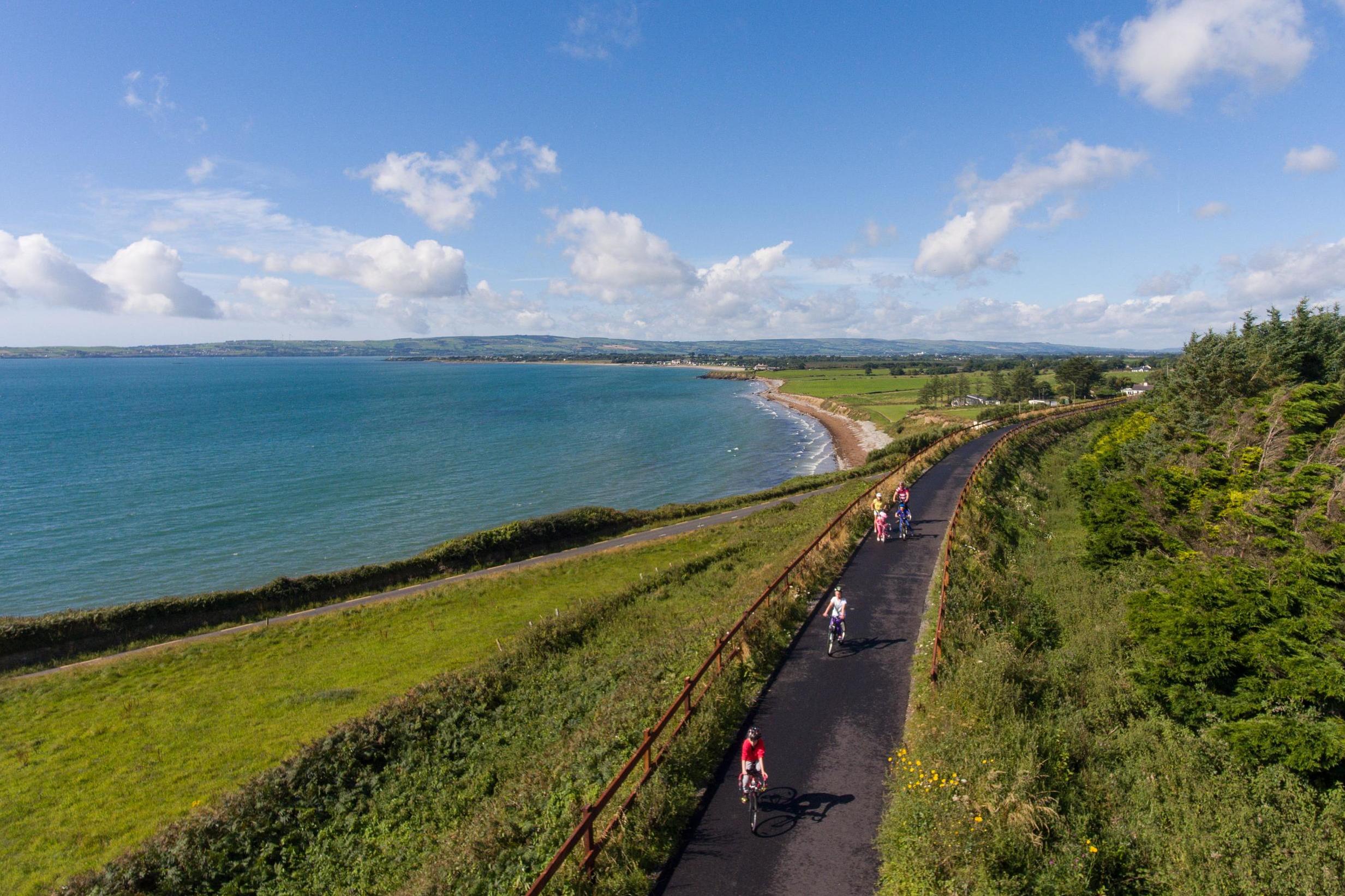The Independent's journalism is supported by our readers. When you purchase through links on our site, we may earn commission.
Waterford Greenway: How a Victorian railway line became Ireland's coolest new bike trail
The transformation of this stretch of railway provides the perfect opportunity to explore the unfamiliar landscapes of Ireland's east coast

Bike or hike the Waterford Greenway – the 28.5-mile stretch of repurposed Victorian railway line which opened in March – and you travel through unfamiliar Irish landscapes.
This south-east corner of the island lacks the epic cliffs and endless beaches of the more famous west coast. The narrow, sunken laneways, small harbour and hillside villages and hidden, rocky coves call to mind Cornwall and Dorset rather than classic Irish coastline.
Both regions do share a common geology, in fact – seams of mineral-rich rocks link them across the Irish Sea. And across the water from Cornwall’s famous tin mines, you’ll find Ireland’s Copper Coast – an Unesco Global Geopark – with abandoned cliff-top mining works and villages similar to those found in the pages of Winston Graham’s Poldark novels.
Fishing villages such as Dunmore East still have echoes of the Viking and Norman invaders who settled here, in the barony of Gaultier, or in Gaelic, Gáll Tír, the “land of the foreigners”.
Waterford and the Copper Coast have traditionally been in the shadow of Dublin and the West. But the city, Ireland’s oldest, is now celebrating its Viking and medieval heritage, with a new, dedicated Medieval Museum and restored Bishop’s Palace.
Waterford is also the starting point for the Waterford Greenway which is bringing new life and first-time visitors to this coast – many from the UK thanks to the nearby ferry port of Rosslare.
The new biking and walking route has opened 50 years after the last steam train travelled this Victorian railway line, and its genesis is largely thanks to local community activists. Riding it, my day starts early at the old terminus for the railway, in the harbour town of Dungarvan.
From there, it’s a short spin to the start of the 28.5-mile route, travelling out of town on a dedicated cycle path to join the railway line which was first laid down in 1878.
It’s a gentle gradient and the cyclists and walkers are a mix of families, weekend spinners on hire bikes, the odd hen party getting some fresh air and fast-moving Mamils (middle aged men in Lycra).
Our first stop is the atmospheric and eerie Ballyvoyle tunnel. It’s long, damp and dark, only dimly lit by recessed lights. We emerge, blinking in the daylight, into a deep-cut gorge, lined with lush ferns, foxgloves and colourful scraps of wood which turn out to be homemade “fairy doors”, left by visiting children in the walls of the cut.
The going is easy on the old railway. In its first year, the Greenway is still relatively quiet, with just the occasional dog walker or amateur photographer to be manoeuvred around.
The rising, tarmacked route then brings you across the Durrow viaduct, high above the Suir valley, with great views stretching out to the Comeragh Mountains and the coast below. From there, it runs over viaducts and bridges, through tunnels and past castles, old mills and country estates like Mount Congreve before finishing up in the 10th-century Viking port that is Waterford. Fish and chips in the town’s oldest pub, The Gingerman on Arundel Lane, is the best place to replenish lost calories.
The Greenway can be done in its entire length or in sections, with the bike-hire shops laying on shuttle buses for those who are not up to biking the entire route, and pubs and tearooms to break up the journey.
On our visit, low clouds, showers and a coastal mist make it a day for a shorter ride, stopping off to take snaps of the wildflowers, fields of damp cows and the tawny Comeragh Mountains.
But we’ve at least had a taste. Wild Atlantic Way? You can keep it. I’ll go for the unexpected Ireland of the Greenway any time.
Travel essentials
Getting there
Regular flights from the UK to Waterford’s small regional airport are on hiatus at the moment – but will probably restart in the spring. Waterford has good road, rail and bus links to Dublin (two hours by road) and Cork (just under two hours’ drive). You can fly direct from 11 UK airports to Cork, with Ryanair (ryanair.com) offering weekend round trips in late Spring 2018 starting at £65.
For those bringing their own bikes, Stena Line (stenaline.co.uk) and Irish Ferries (irishferries.com) run daily services from Pembroke and Fishguard to Rosslare (47 miles from Waterford). A pedestrian with their bike crossing from Fishguard to Rosslare in May 2018 with Stena Line will pay £96 return.
Staying there
In Dungarvan at the western end of the Greenway, stay at Lawlors Hotel (lawlorshotel.com), a pleasant and convenient B&B; doubles from £98. Dungarvan’s Tannery Restaurant & Townhouse (tannery.ie), meanwhile, offers award-winning food and a cookery school. Doubles from £95, B&B.
In Waterford, the four-star Granville Hotel (granvillehotel.ie) on the quays has heritage and charm; doubles from £120, B&B.
More information
There are many bike-hire places at both ends of the Greenway or along the way including Waterford Greenway Bike Hire (waterfordgreenwaybikehire.com). Rentals for adult bikes start at €20 (£18) a day and they can be dropped at various points. There are shuttle-bus services for drop-off and pick-up which allow you to choose which section you would like to explore.
Subscribe to Independent Premium to bookmark this article
Want to bookmark your favourite articles and stories to read or reference later? Start your Independent Premium subscription today.

Join our commenting forum
Join thought-provoking conversations, follow other Independent readers and see their replies